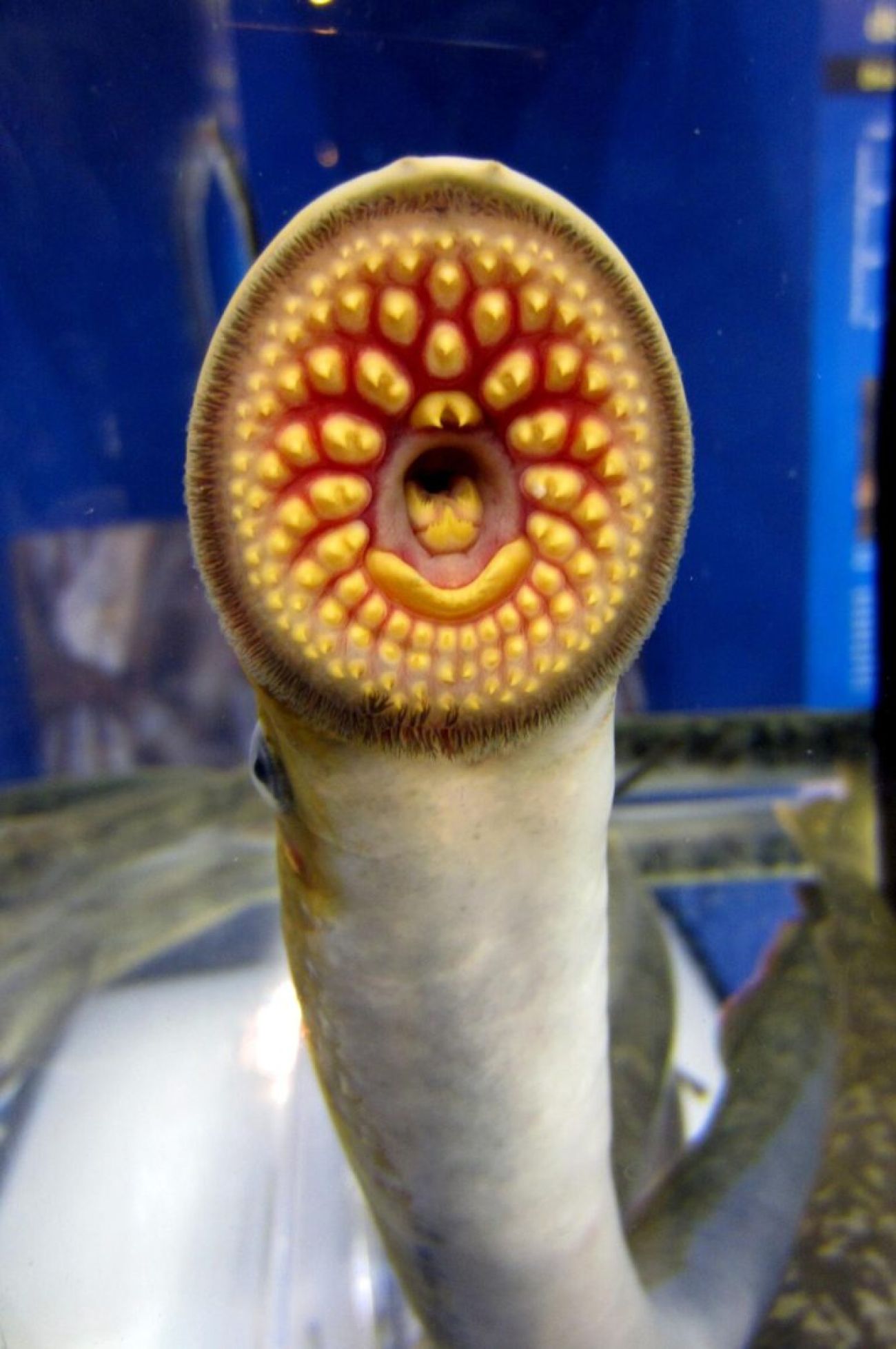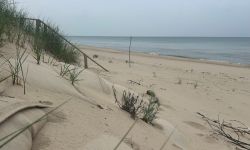Mussels, alewives lead list of 10 worst invasive species in Great Lakes

LANSING – Researchers have revealed the Great Lakes’ 10 worst aquatic invasive species, spotlighting the plants and animals that pose the greatest threat to the region’s delicate ecosystems, fisheries and recreational waters.
Their recent study in the Journal of Great Lakes Research is the first to compare all 188 nonnative species in the lakes with the same methods and pinpoint which are causing the most harm, its authors said.
At the top of the list is the zebra mussel.
These small but mighty mollusks are believed to have made their way into the Great Lakes in the 1980s through ballast water in ships from Europe. They can now be found in all five Great Lakes.
Zebra mussels feed on plankton in the water, which has made the lakes unnaturally clear and diminished the base of the food chain, leaving less for native fish to eat. They also attach to boat bottoms and pose a risk to swimmers due to their sharp edges.
Related:
- Using mussels to scrub fresh water — and sound the alarm on contamination
- Could parks and beaches replace coal plants in Michigan? Bay City may find out
- Michigan’s fall salmon migration run has begun. Anglers are salivating
Although the quagga mussel took the runner-up slot, the species has similar impacts and is more widespread than the zebra mussel because it can live in colder, deeper waters, said Ashley Elgin, a study author and Muskegon-based research scientist with National Oceanographic and Atmospheric Association’s Great Lakes Environmental Research Laboratory.
“Here’s an opportunity for quagga mussels to get more in the spotlight because they have very, very widespread ecosystem impacts and are more widely distributed throughout the Great Lakes than zebra mussels,” Elgin said.
Great Lakes’ top 10 most harmful aquatic invasive species
- Zebra mussel
- Quagga mussel
- Alewife
- Sea lamprey
- Japanese stiltgrass
- Grass carp
- Water chestnut
- Common reed
- Round goby
- White perch
Nonetheless, the study ranked zebra mussels as the most damaging because they are commonly found in shallow water by the shore. That makes them more likely to be exposed to contamination and eaten by birds, passing contaminants up the food chain.
The report based its scoring of each species on six questions designed to gauge environmental impact and six for socio-economic factors.
Small fish called alewives earned the number-three spot due to their success in the lakes at the expense of native species. They threaten the predator-prey dynamic of the delicate ecosystem and contain an elevated level of thiaminase, an enzyme that can cause a fatal thiamine deficiency in species that eat them, the researchers said.
Alewives spread via shipping canals in the 1870s, eating the larvae of native fish. Their populations exploded because there weren’t enough large predator fish to keep them in check, the study said.
That lack of predator fish could be partly attributed to the species ranked fourth on the list, the sea lamprey, which arrived in the region in the 1830s through canals.
These eel-like fish latch onto large, predatory native species and suck their blood, sometimes fatally. Lamprey ranked slightly lower than alewives because they are not known to significantly compete with native species for resources, according to the study.

The top 10 list also contains three plant species, including Japanese stiltgrass.
Stiltgrass is native to Asia and was brought to the region when it was used as a packing material for importing fragile goods, said El Lower, the lead author and communication specialist with the Great Lakes Aquatic Nonindigenous Species Information System and Michigan Sea Grant in Ann Arbor.
Stiltgrass thrives in wetlands and waters, where it outcompetes native species. It is often overlooked as an invasive compared to animals and other aquatic plants, Lower said.
“That is not necessarily what people might think of when they think about aquatic invasive species,” Lower said. “We were really surprised to see that it scored way higher than other invasive plants that are getting more buzz.”
All invasive species are nonnative, but not all nonnative species are classified as invasive. Only those that have proven to cause significant harm to a region’s environment, social or economic features achieve that designation.
Invasives pose major threats due to their unpredictability, said Daniel O’Keefe, an Ottawa County-based Extension educator with Michigan Sea Grant, who did not take part in the study.
“It’s really a challenge to manage the resources when there are so many invasive species in the system. Many of them have not really come to an equilibrium yet with the rest of the environment,” he said.
“Quagga mussels are a good example,” O’Keefe said. “They’ve been expanding and growing and reaching deeper waters, and we’re still not entirely sure where the equilibrium is going to land.”
The study is the first to rank the destructive impacts of aquatic invasives using the same evaluation methods across multiple types of species, the researchers said.
“Our assessment tool will work for anything from a virus to a tree and everything in between,” said coauthor Rochelle Sturtevant, a program director for GLANSIS in Ann Arbor.
Lower said the study can help Great Lakes resource managers and others focus their efforts and funding toward species with the greatest impact. It also provides a concise list for the general public to direct their attention.
“We wanted to be able to give them a good place to start, whether that was in the classroom or just to know about their own communities and lake shores,” Lower said.
The findings also show how significantly people have shaped the lakes: Many of the species on the list came to the region due to human introduction. In addition to changing the lakes, Sturtevant said they also affect people who live here.
“I’m hopeful that this can help managers and individuals better understand the invasion of the Great Lakes and the serious impacts that it has for our region,” she said. “It’s not separate from people. These are all impacts that come back to us.”
Shealyn Paulis writes for Great Lakes Echo.
Michigan Environment Watch
Michigan Environment Watch examines how public policy, industry, and other factors interact with the state’s trove of natural resources.
- See full coverage
- Subscribe
- Share tips and questions with Bridge environment reporter Kelly House
Michigan Environment Watch is made possible by generous financial support from:
Our generous Environment Watch underwriters encourage Bridge Michigan readers to also support civic journalism by becoming Bridge members. Please consider joining today.
See what new members are saying about why they donated to Bridge Michigan:
- “In order for this information to be accurate and unbiased it must be underwritten by its readers, not by special interests.” - Larry S.
- “Not many other media sources report on the topics Bridge does.” - Susan B.
- “Your journalism is outstanding and rare these days.” - Mark S.
If you want to ensure the future of nonpartisan, nonprofit Michigan journalism, please become a member today. You, too, will be asked why you donated and maybe we'll feature your quote next time!






